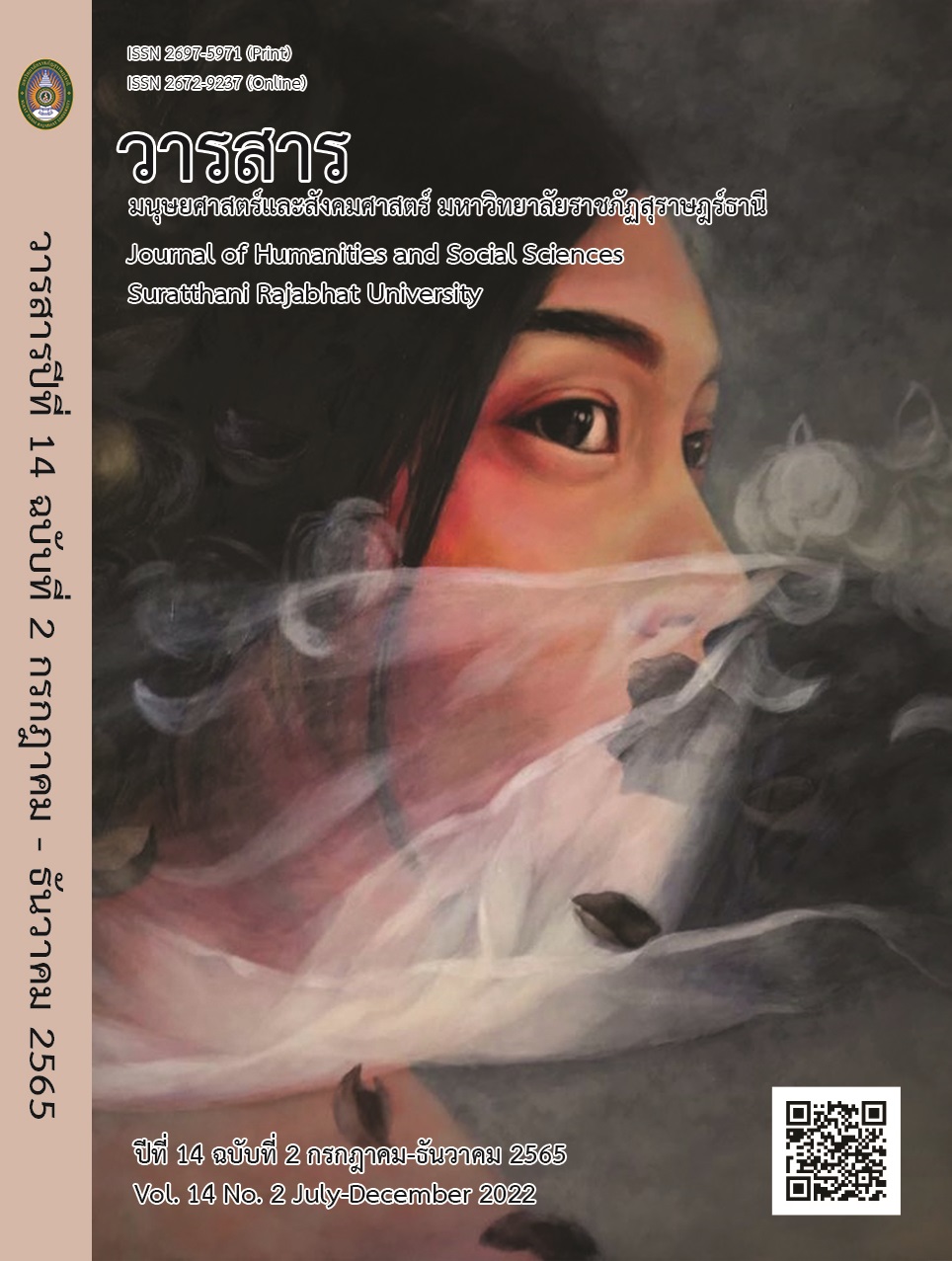Western Human Rights: The Application and The Process of Buddhist Paradigm
Main Article Content
Abstract
The objective of this academic paper is to interpret western human rights declared by United Nations by applied Buddhist Paradigm. The Western human rights are that of the Three Declarations i.e., the Universal Declaration of Human Rights (1948), the Declaration on the Rights of the Child (1959), and Declaration on the Elimination of Discrimination Against Women (1979). The author has crystallized the three Declarations into 3 contents: 1) human rights, 2) equality, and 3) brotherhood. Later, the author explained these three declarations by applied Buddhist concept from the Sutra and the
Vinaya.
The study revealed that by wording Buddhism did not use the term “human rights” directly, but utilized the same essence in other words i.e., freedom, equality, and brotherhood. 1) “freedom” found in the Pavarana Sutra where chances opened to loving kindness monks to admonish other monks, the Cakkavatti Sutra (the 5 Sīlas or 5 precepts) mentioned not to violate other beings, their belonging, and their wives, and suggested to do righteous speaking and communicated with awareness as well, while the Noble Eightfold Path (No. 5) stated that those who wish to attain enlightenment should not earn their living mischievously, in the 7 conditions of welfare or the 7 Aparihāniyadhamma (No. 5) told us about women rights, While the Commentary on the Novice Rāhula Sutra mentioned children rights, and the Kālāma Sutra stressed on freedom of faith and opinions. 2) “Equality”
explained differently; (1) in the West equality show no different in nation, religion, gender, language, and race according to human rights all of us were equal, (2) Brahmanism stated that all human being were not equal since they were born from different parts of the Brahman, and (3) Buddhism
believes that human beings were born equally, but actions differentiate us for instance born in high caste, Buddhism referred to those who were
righteous and low caste referred to those who did mischievous actions. Moreover, the Buddha also redefined Brahmanism’s caste system. To the Buddha human beings classified differently based on their duties i.e.,
Brahman were those who teach, worriers were Kashatriya, while craftsmen were Vaishaya, and labors were Shudra. and 3) “Brotherhood” Western
believed that all human beings were brother since we all were handicraft of God. Therefore, we all should treat each other like our family members. While Buddhism stated that all beings were related in the round of rebirth, we should be kind to each other. Whenever we did merit, we should share to us all.
However, there were some different aspects should be mentioned: 1) freedom in the West referred to outer freedom, while Buddhism referred to inner freedom (spiritual freedom). 2) Human Relation, Western see human relation based on rights, this led them to protect their rights intensively, and caused them to live individually. While Buddhists lived their lives through loving kindness. Loving kindness acted like bridges that collected all human beings to live collectively. Therefore, human rights would be more unity if we can merge these two aspects smoothly.
Article Details

This work is licensed under a Creative Commons Attribution-NonCommercial-NoDerivatives 4.0 International License.
All published manuscripts have been verified by peer-peer professors in the fields of humanities and social sciences. Reprinting of the article must be authorized by the editorial staff.
References
กรมการศาสนา กระทรวงศึกษาธิการ. (2525). พระไตรปิฎกภาษาไทย ฉบับหลวง (พิมพ์
ครั้งที่ 4). กรุงเทพฯ: โรงพิมพ์การศาสนา.
กุมพล พลวัน. (2520). สิทธิมนุษยชนกับสหประชาชาติ (พิมพ์ครั้งที่ 2). กรุงเทพฯ:
กองวิชาการ กรมอัยการ.
แครนสตัน มอริช. (2527). สิทธิมนุษยชนคืออะไร?. เสรีภาพ, 66(4), 56-59.
จรัญ โฆษณานันท์. (2528). กฎหมายกับสิทธิเสรีภาพในสังคมไทย เส้นขนานจาก...2475
ถึงปัจจุบัน. กรุงเทพฯ: กลุ่มประสานงานศาสนาเพื่อสังคม [กศส.].
ฉัตรสุมาลย์ กบิลสิงห์. (2526, มีนาคม). พระพุทธศาสนาและฐานะของผู้หญิง. วารสาร
ธรรมศาสตร์, 12(1), 159.
เฉลิมเกียรติ ผิวนวล. (2530.) ปรัชญาสิทธิมนุษยชนและพันธกรณีในสังคมไทย.
กรุงเทพฯ: กลุ่มประสานงานเพื่อสังคม.
ตราแผ่นดินของฝรั่งเศส. (2562, 22 พฤษภาคม). มติชนออนไลน์. https://www.
matichon.co.th/columnists/news_1504969
ปริตตา เฉลิมเผ่า, ผู้แปล. (2526, พฤศจิกายน - ธันวาคม). สิทธิมนุษยชน: ปฏิญญาสากล
ว่าด้วยสิทธิมนุษยชน. วารสารคณะกรรมการแห่งชาติว่าด้วยการศึกษาฯ
สหประชาชาติ, 15(6), 37–38.
พระครูสุพลวุฒิกร (ทวนชัย สุภโร). (2558, มกราคม - เมษายน). ระบอบสามัคคีธรรม:
บทเรียนจากเจ้าลิจฉวีถึงสังคมไทย. วารสารครุศาสตร์ปริทรรศน์ฯ, 2(1), 48–53.
พระไตรปิฎกภาษาไทย ฉบับมหาจุฬาลงกรณราชวิทยาลัย. (2539). กรุงเทพฯ: โรงพิมพ์
มหาจุฬาลงกรณราชวิทยาลัย.
พุทธทาส อินทปัญโญ. (2531, พฤษภาคม 22). บัตรอวยพร ส.ค.ส. โมกขพลาราม, ไชยา.
https://th.wikipedia.org/wiki/พระพรหม
พระเทพเวที (ประยุทธ์ ปยุตฺโต). (2531). พุทธธรรมฉบับขยายความ (พิมพ์ครั้งที่ 4).
กรุงเทพฯ: มูลนิธิพุทธธรรม.
พระเทพเวที (ประยุทธ์ ปยุตฺโต). (2533). พจนานุกรมพุทธศาสน์ฉบับประมวลศัพท์ (พิมพ์
ครั้งที่ 6). กรุงเทพฯ: มหาจุฬาลงกรณราชวิทยาลัย.
พระเทพเวที (ประยุทธ์ ปยุตฺโต). (2535). พจนานุกรมพุทธศาสตร์ฉบับประมวลธรรม
(พิมพ์ครั้งที่ 7). กรุงเทพฯ: มหาจุฬาลงกรณราชวิทยาลัย.
พระมหาสมบูรณ์ วุฑฺฒิกโร. (ม.ป.ป.). พุทธจริยศาสตร์กับปัญหาโสเภณี. http://www.
mcu.ac.th/site/articlecontent_desc.php?article_id=434&articlegroup_
id=102
วิถีชีวิตของสิทธิมนุษยชน (Human Rights is a way of life). (2556). แมกกาซีนเสรีภาพ
โดยแอมเนสตี้อินเตอร์เนชั่นแนล ประเทศไทย, 4(3), 2-39.
วีระ โลจายะ. (2532). กฎหมายสิทธิมนุษยชน (พิมพ์ครั้งที่ 10). กรุงเทพฯ: มหาวิทยาลัย
รามคำแหง.
สมเด็จพระพุทธโฆษาจารย์; ป.อ. ปยุตฺโต. (2531). พจนานุกรมพุทธศาสตร์ฉบับประมวล
ธรรม (พิมพ์ครั้งที่ 34). กรุงเทพฯ: มูลนิธิการศึกษาเพื่อสันติภาพ พระธรรมปฎก
(ป. อ. ปยุตฺโต).
อำนวย ยัสโยธา. (2547). กาลามสูตร: พระสูตรว่าด้วยความเชื่อแบบพุทธกับการดำเนิน
ชีวิตประจำวัน ยุคข้อมูลข่าวสารครองโลก. กรุงเทพฯ: ภาพพิมพ์.
เอบเซนอิงเวอร์, เอเลม์สคิด, และ กลาแซร์ เฮนนิง. (2561). Democracy, Constitution and
Human Rights รวมบทความทางวิชาการภาษาไทยอังกฤษ และเยอรมัน. กรุงเทพฯ:
คณะนิติศาสตร์ มหาวิทยาลัยธรรมศาสตร์.
Gove, Philip Babcock (editor in chief). (1965). Webster's Third New International
Dictionary, Massachusetts. U.S.A.: G. & C. Merriam Company.


